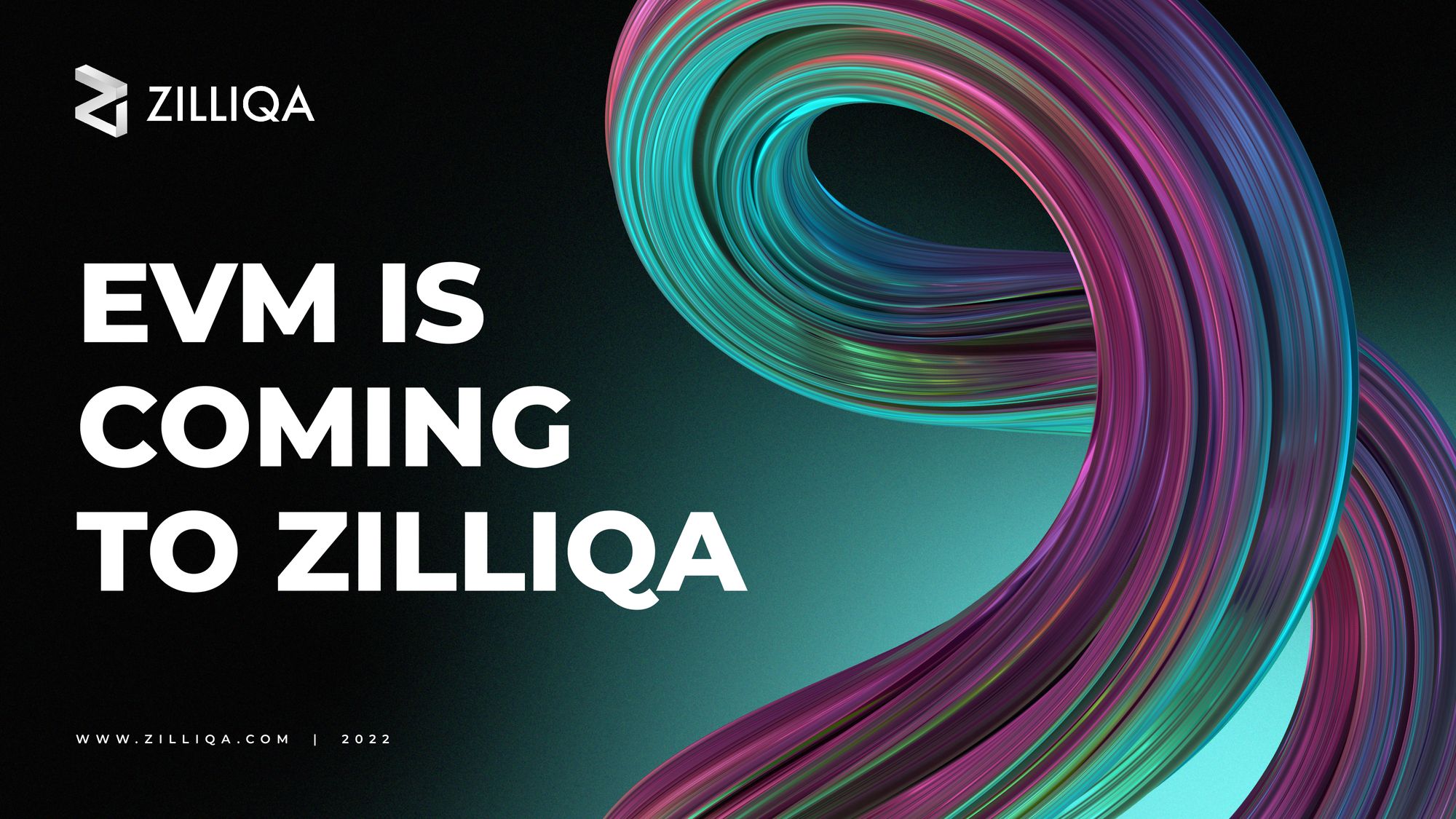Zilliqa launches EVM compatibility on testnet
We’re excited to announce the introduction of EVM compatibility to the Zilliqa testnet.

We’re excited to announce the introduction of EVM compatibility to the Zilliqa testnet - the first step in bringing the scalable, low-fee, and efficient Zilliqa protocol to a wider ecosystem of blockchain users and developers building EVM-compatible smart contracts.
By taking a multi-chain approach to developer support and opening the Zilliqa protocol to a greater number of builders and projects, we can make the efficiencies of Zilliqa more accessible and interoperable with exciting DeFi projects, dApps, and more.
Bringing EVM compatibility to mainnet will be a carefully managed, multi-stage process that will ensure that smart contracts run reliably on the Zilliqa network and enable a wider ecosystem of developers to take advantage of the blockchain’s unique features.
EVM compatibility makes it easier than ever to use and build on Zilliqa, and will enable Zilliqa developers to create applications that work across multiple blockchains and service more users from across a large market of interoperable platforms.
Supporting EVM contracts on testnet is the first phase of this process, and we will continue to improve our support for EVM and work together with developers to ensure Zilliqa’s EVM compatibility functions reliably and efficiently.
Now that EVM compatibility has been launched on testnet, we encourage developers to try out this support by migrating dApps to the Zilliqa blockchain and building on Zilliqa using familiar EVM development tools.
What is EVM?
EVM (Ethereum Virtual Machine) is the software platform used to build applications on Ethereum and other protocols that have implemented EVM compatibility.
Using the Solidity programming language, blockchain developers create decentralised applications for the EVM stack that can run on Ethereum and on blockchains that have implemented EVM compatibility.
This allows developers to build dApps, tokens, and assets that can run and be transferred on multiple blockchains, as well as deploy solutions such as token bridges and decentralised exchanges seamlessly.
Interoperability is a key issue in the blockchain development industry, with many cutting-edge applications being built across disparate infrastructure.
By adopting EVM compatibility, blockchain protocols like Zilliqa can retain their unique features and efficiencies while benefiting from more development, applications, adoption, and cross-protocol services.
What to expect from EVM on Zilliqa testnet
The testnet launch of EVM compatibility on Zilliqa is designed for developers to deploy smart contracts on the blockchain and test out our EVM implementation.
As more people try out EVM applications on Zilliqa and test their performance, we will engage in an iterative development process to improve reliability and efficiency as we prepare for the deployment of EVM compatibility to the mainnet.
It’s important to note that as this is a testnet deployment, there may be bugs and some types of smart contracts may not deploy properly.
Working collaboratively with developers, we will test and resolve any issues that may arise during the testnet phase to improve the EVM implementation and ensure the mainnet deployment of EVM compatibility is stable, secure, and reliable for anyone to build on.
Building EVM apps on Zilliqa
Building EVM-compatible applications on the Zilliqa testnet can be done in almost exactly the same way as on Ethereum, lowering the barrier for entry for developers to build on the efficient and scalable Zilliqa protocol.
This means that developers with knowledge of EVM development can now seamlessly deploy their applications on a platform with a powerful sharding infrastructure and low transaction fees, enabling their dApps to be faster and more efficient.
Solidity contracts can be deployed directly on the Zilliqa platform, and Zilliqa will now support MetaMask and other user-facing platforms within the Ethereum ecosystem.
This is not only good news for developers and users working with other EVM-compatible blockchains, but also for those in the Zilliqa community, as it will enable a number of new opportunities for DeFi liquidity, application integration, and easy bridging of tokens across protocols.
Developers who have been building on the Zilliqa blockchain using the secure-by-design Scilla scripting language will also be able to deploy their Scilla smart contract code to the wider EVM ecosystem once interoperability between Scilla and EVM is implemented.
This means there is even more reason to begin building applications with Scilla, as your code will soon be able to seamlessly interact across multiple blockchains.
What developers need to know
At the launch of EVM compatibility for the Zilliqa testnet, there are a number of integrations that are still being deployed.
Integration between the ZRC-2 and ERC-20 standards for fungible tokens is currently underway, as is interoperability between Scilla and Solidity smart contracts.
It is also important to note that in the current testnet deployment, subunit correspondence between ETH and ZIL is not implemented, with Zilliqa’s subunit resolution remaining at 10-12. This means token values below an extremely small resolution (below 10-12) will be lost, although transaction values at this subunit resolution are largely irrelevant.
Documentation and resources for developers working to implement Solidity smart contract code on Zilliqa is currently being created, but developers can use existing EVM developer environments, deployment tools, and wallet integrations to launch their applications from day one.
Tools including Truffle, Hardhat, and MetaMask will now function with the EVM-compatible Zilliqa testnet, so if you’re interested in migrating your project or building new EVM apps on the protocol, you can get started right away.
For more information about EVM compatibility on the Zilliqa testnet, please visit our developer portal.
